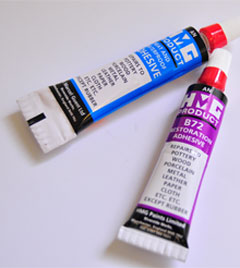HMG Paints Adhesives Help Preserve Our Cultural Heritage
PRS0066
HMG Paints are dedicated to preserving these materials at both ends of the natural cycle. Its anti-corrosive primers, preservative wood treatments, weather-resistant masonry paints and high performance coatings help protect them against abrasion, wear, chemical and environmental attack; while its historical vehicle colours, extensive library of heritage paints and conservation-grade adhesives help restore culturally significant structures and artefacts for future generations.

03/07/2012 08:05:32
“People know that paints and adhesives contain solvents and other chemicals and wrongly assume that they are environmentally unfriendly,” says HMG’s Managing Director, John Falder. “But our technology can extend the working life of many man-made objects, saving the raw materials otherwise needed to replace them, and help restore and preserve damaged, corroded or fragmented objects without affecting their historical importance, whether it’s a vintage vehicle or an archaeological find.”
The company’s conservation-grade glues are represented by HMG Heat & Waterproof Adhesive and HMG B72 Restoration Adhesive, which are renowned in archaeological circles worldwide and prized by museums, galleries, conservators and restorers for their technical performance. One of the guiding principles of interventive conservation is that of ‘reversibility’, whereby the object should be capable of being returned to its original state prior to intervention; and both HMG’s museum-grade adhesives are formulated to be permanently reversible and resealable in solvents, so that artefacts can be subsequently unglued for correcting mistakes, minor realignment or adding newly-found fragments. They also possess the correct levels of plasticity and viscosity necessary for good workability, desirable water-white transparency and non-yellowing characteristics, and excellent physical and chemical stability.
One unsolicited endorsement, highlighting these technical properties, came recently from restorer Nick King, who has been using HMG Heat & Waterproof Adhesive in the reconstruction of late Iron Age storage pots, discovered during an archaeological dig at the village of Corfe Castle in Dorset. An ancient settlement site, Corfe Castle is home to a range of archaeological sites from the Stone, Bronze and Iron ages, as well as a Grade 1 listed castle overlooking the village, and these pottery finds are believed to be from an early grain storage pit. The pots, seven in total, are probably Black Burnished Ware, a type of pottery once widely produced around Poole Harbour during the Roman period, using local clays and traditional techniques and production methods.
“HMG Heat & Waterproof Adhesive has allowed me to rebuild the pots, which really are of an ‘industrial size’, by not setting immediately and allowing the curvature to be varied prior to fully setting,” says Nick. “Of course, there are times when errors have been made and, by using acetone, I have been able to disassemble and rebuild, without harming what can be very delicate material.
“As an amateur restorer, I have consulted with experts and am always asked which adhesive I am using to reconstruct the pottery,” he adds. “When I reply ‘HMG Heat & Waterproof Adhesive’, there’s a definite look of relief, as they had surmised that I had been using a less friendly type of adhesive.”
Whereas HMG’s adhesives are designed to maintain the principles of reversibility, many of today’s epoxy resins and cyanoacrylate ‘super glues’ are virtually irreversible after use and their later removal can actually damage the object itself or even prevent future treatment.
Widely used by the British Museum and the highly respected York Archaeological Trust, and their overseas counterparts, HMG adhesives are especially formulated for precision restoration and repair work and are equally prized for modelmaking and as arrow fletching glue. Their easy-to-control nozzles enable the exact amount to be dispensed and there is good all-round adhesion to most common materials, including ceramics, metal, wood, paper, leather and cloth.
The traditional favourite, HMG Heat & Waterproof Adhesive is a single-pack, clear product, which is touch dry in 5 minutes and hard dry in 10 minutes, resisting temperatures up to 100°C. In contrast, HMG B72 Acrylic Adhesive offers longer working times, being touch dry in 3 – 5 minutes, surface dry in 1 hour and hard dry in around 6 hours; not having instant grab, the glue allows fragments to be easily readjusted and surplus adhesive removed with acetone, for virtually invisible joins.
HMG conservation-grade adhesives are available from specialist stockists, model and art shops, or direct from HMG Paints, Riverside Works, Collyhurst Road, Manchester M40 7RU, telephone 0161 205 7631, email sales@hmgpaint.com, www.hmgpaint.com